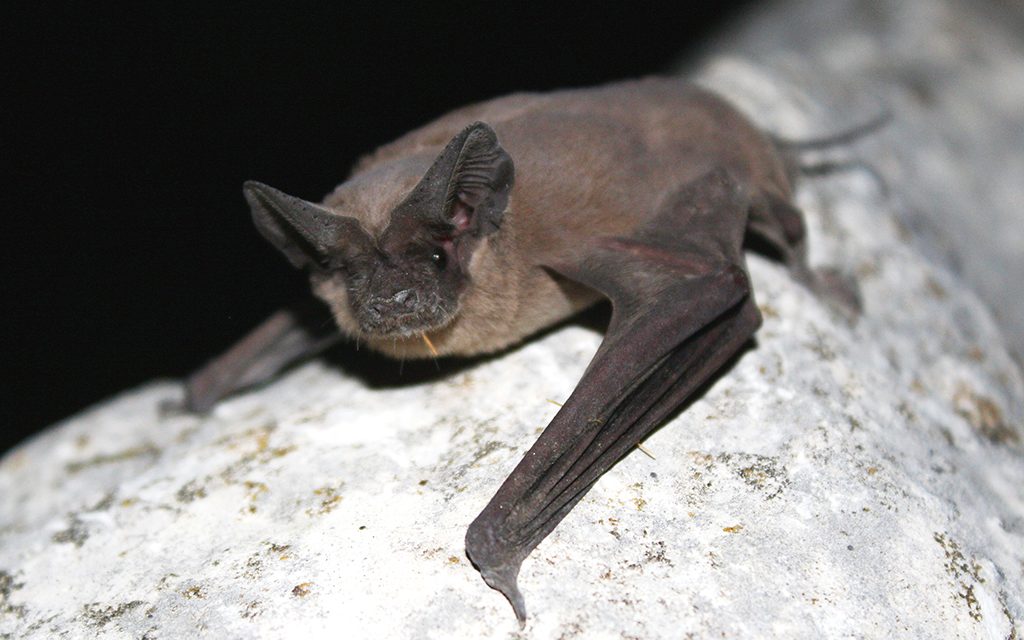by John Jefferson
We were on our deck watching it rain. But our dogs seemed highly interested in the empty collapsible trash bin we put pruned branches in. Vicky said it might be a cotton rat as she tipped it over.
Our smaller dog darted in, snapped at something unseen, and dashed out, heading to the doggie door, and inside.
“Something’s in his mouth!” I yelled as he shot past me. Vicky accelerated into hot pursuit. I grabbed the trash picker-upper that we handle dead critters with and followed closely. I heard her yell “DROP IT!” several times from inside.
If you had just nabbed a wild thing, wouldn’t you have wanted to eat it on the living room rug, too? Ours have carted in dead rats, squirrels, a dove, and an owl. Then Vicky yelled, “It’s a bat!” And she didn’t mean a Louisville Slugger!
“Don’t touch it!” I warned. She carefully held tripled-plastic bags open as I released the trash grabber handles and bagged the bat. The Internet said don’t freeze the specimen. Next morning, I took it to the Department of State Health Services Lab.
A nice lady called me 24-hours later. The test was NEGATIVE. Our dogs’ vaccinations are always kept current. But we had been worried after Ruger carried the bat in his mouth. All is well, though, following the negative report.
Bats carry rabies — an insidious disease. But like the fear of blood-sucking vampire bats from old horror movies, the fear is overblown.
TPWD biologist, Jonah Evans, termed bat-born rabies as “uncommon”. He referred me to TPWD’s bat information. Accordingly, less than one-percent contract rabies. It does still occur, however. Keep your guard up. Don’t handle live bats — they can bite — or dead bats, barehanded. Get them tested.
And don’t demonize bats. Their bad reputation overshadows the good they perform. Foremost, they eat kazillions of mosquitoes every night!
Each bat consumes roughly 1,200, nightly. Some are said to gobble close to 3, 000! As much rain as we’ve had in recent weeks, we’re expecting a monumental mosquito infestation!
Texas hosts 32 species of bats. Most common is the Mexican Free-tailed bat. Its main enemies are white-nose syndrome, rabies, hitting vehicles, wind turbine blades, and cold weather. Significant numbers migrate to Mexico each winter, but not all. Many remaining here — and others returning early this year — died from severe cold in February.
Bats also greatly benefit agriculture and homeowners through pollinating crops and gardens. Agricultural estimates are in the billion$. Bat droppings, known as guano, are commercially gathered, too – giving mosquitoes a purpose for existing … I guess.
Bats retreat from daylight in caves, rocks, old buildings, bridges, mines, and trees. They’ve even become tourist attractions. Bracken Cave is the largest bat colony in the world, hosting 15-20 million bats each summer. Located in southern Comal County near San Antonio, it is owned by Bat Conservation International. See website. The most popular site in Texas is Austin’s Congress Ave. Bridge.
And it’s free!
JJ





